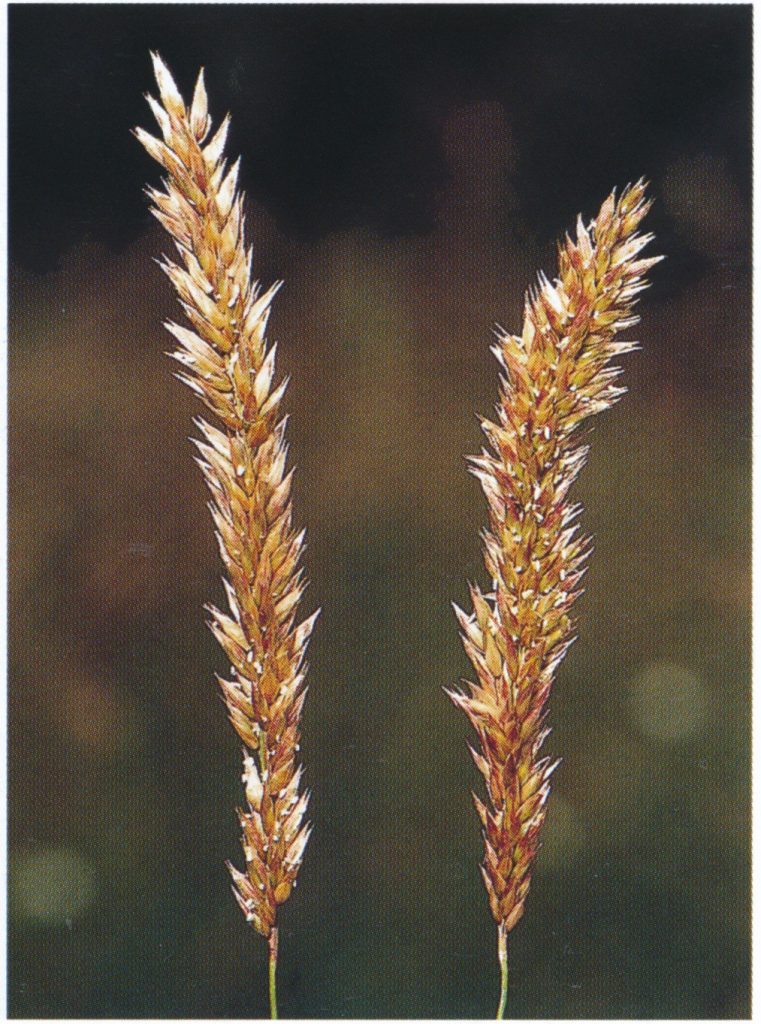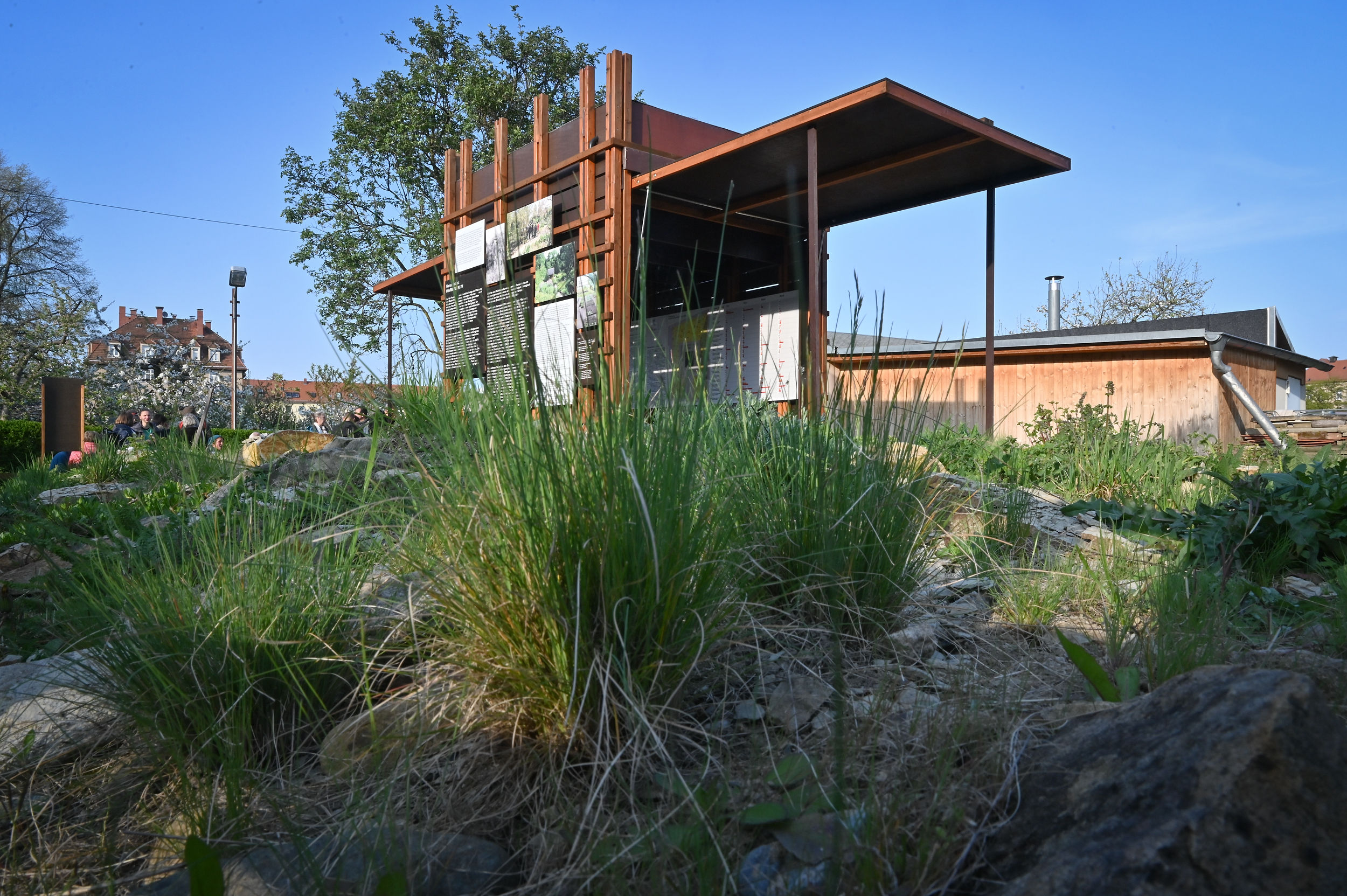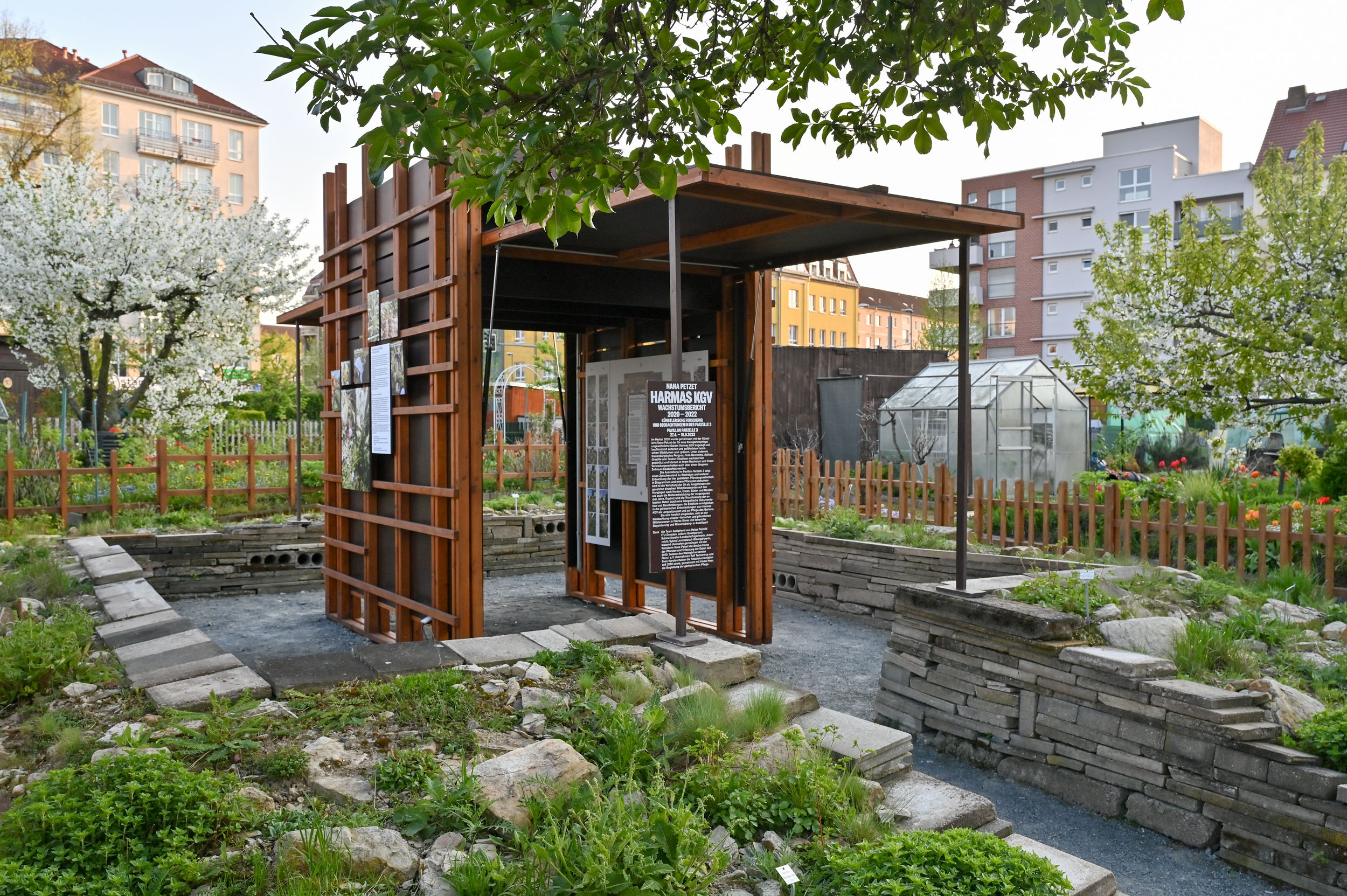
An artistic model garden for observing rare and endangered plants in the region has been created in the centre of the allotment gardens. Artist Nana Petzet developed the Harmas KGV garden to demonstrate the interaction between microclimates, special local soils and the long-term growth and behaviour of wild plants using the example of endangered native wild flowers and grasses. Pläner, a rock from the Cretaceous period that is characteristic of the region, mixed with loess loam, was piled up around the exhibition pavilion.
Slopes in all four directions offer the plants different microclimatic conditions. On the outer wall of the pavilion, plant portraits invite visitors to encounter the native wild plants that have become rare here, whose development can be observed on site. Stony, inhospitable areas overgrown with wild plants, which are rarely found today, are known as harmas in the south of France. The southern French research garden of Jean-Henry Fabre, one of the pioneers of scientific insect research at the end of the 19th century, is the inspiration for the artistic research and long-term project Harmas KGV by Nana Petzet.
Nana Petzet (*1962) is a visual artist. After studying at the Akademie der Bildenden Künste in Munich and the Hochschule für Bildende Künste in Hamburg, her work centres on the examination of different scientific disciplines and the special role of green spaces in the city.


























